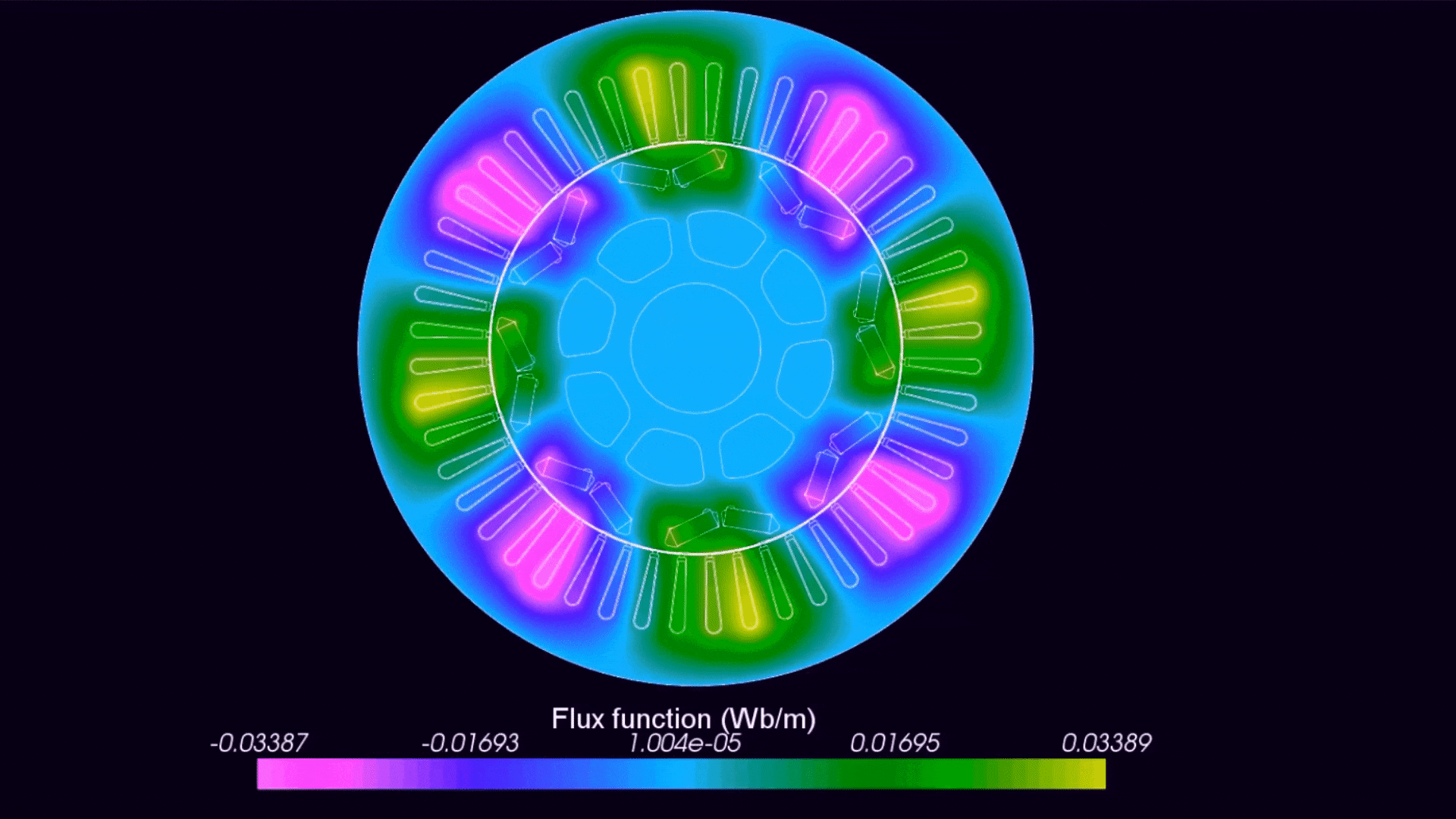Electromagnetic Compatibility
Use predefined virtual experiments to evaluate the simulated performance of electric motors. Experiments produce output quantities, waveforms, fields, and graphs.
Industry 4.0 factories, incorporating wireless IIoT systems, operate in a complex and noisy electromagnetic environment, as there is an increasing number of electronic devices and electrical cables and wires in vehicles, as well as a significant expansion of antennas and new types of wireless devices. Therefore, it becomes increasingly challenging to ensure that a device continues to function correctly by being immune and not interfering with surrounding devices causing possible failures.




Analyzes
Method of Moments
Uniform Theory of Diffraction
Iterative Physical Optics
Simcenter 3D High Frequency addresses a broad frequency spectrum to cover all major analysis needs. Users can select the most appropriate one from a variety of dedicated solvers . These include full-wave solvers based on integral methods for solving Maxwell's electromagnetic equations (Method of Moments – MoM) and asymptotic methods based on Uniform Diffraction Theory (UTD) and Iterative Physical Optics (IPO). Efficiently solve full 2.5D and 3D field problems. Solver acceleration options are incorporated to facilitate direct handling of ultra-large scale system-level models such as complete aircraft, satellites, ships and cars.
MoM solves Maxwell's equations discretely without making any approximation: the problem is discretized and transformed into a system of linear equations. Both standard (direct) and fast (iterative with multilevel fast multipole algorithm) solution approach are available. Different boundary conditions are managed: Electric Field Integral Equation (EFIE), Impedance Boundary Conditions (IBC), Combined Field Integral Equation (CFIE) and Poggio-Miller-Chang-Harrington-Wu-Tsai (PMCHWT).
Preconditioners (eg Multi-Resolution, SPLU, ILUT) accelerate the convergence of the iterative solution approach. Low-frequency stabilization methods (S-PEEC formulation) solve the problem of low-frequency breakage (very ill-conditioned linear system). The multiport approach minimizes the computational load for evaluating active solutions. MoM is suitable when precision is required for complex problems (in terms of geometries and materials) and when the interaction between the radiation source and the scattering structure is strong.
The Uniform Theory of Diffraction (UTD) is a “ray” method, based on an asymptotic solution of Maxwell's equations. The UTD is applicable when a radiant source interacts with a scattering structure whose dimensions are much larger than the field's wavelength (eg ships, vehicles or scene settings such as airports, factories, cities, etc.). Under these assumptions, as well as in the case of optics, electromagnetic scattering can be described as the combination of discrete contributions (reflections and diffractions of different orders) from a number of “hot spots” distributed in the structure (edge, wedge, vertex), according to the relatively simple geometrical laws relating to the propagation of rays. UTD manages real materials characterized through transmission and reflection coefficients.
Iterative Physical Optics (IPO) is a current-based high-frequency iterative technique. The IPO is applicable in the evaluation of the interaction between a radiant source and a scattering structure whose dimensions are larger than the field wavelength (for example, antenna reflectors, radomes, vehicles, etc.). The application of the equivalence theorem for the description of the scattering mechanism and adoption of the iterative process allows the reconstruction of interactions between objects in complex scenarios without resorting to ray-tracing . Computational resources are optimized by exploiting state-of-the-art technologies: GPU computing, far-field fast approximation algorithm, and iterative relaxation techniques. Thin sheets and impedance boundary condition formulations are available.
Simcenter includes distinctive low- and high-frequency electromagnetic simulation capabilities for the unique demands of each domain. Expand your insight into electromechanical component performance, power conversion, antenna design and location, electromagnetic compatibility (EMC) and electromagnetic interference (EMI). A variety of dedicated solvers (time and frequency based, linear and non-linear, finite and boundary element) provide a transformative CAE process, with simulations ranging from quick initial analysis to inherent realism for final verification.
Complementarily, Simcenter 3D High Frequency allows analyzing the electromagnetic performance of electrical harnesses, which are imported directly from the CAPITAL software , world leader in wire harness engineering tools. In Simcenter 3D, automatic features work on generating 3D geometry from CAPITAL and assigning properties. The integrated multi-conductor transmission line network (MTLN) solver, combined with Simcenter 's electromagnetic solver – 3D High Frequency–, allows you to perform any wiring harness analysis such as emission, susceptibility, and cross talk within the harness and between the whips.